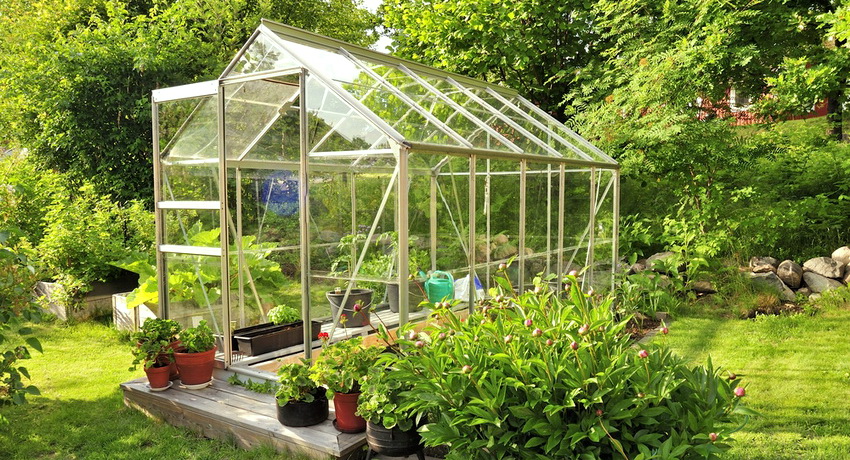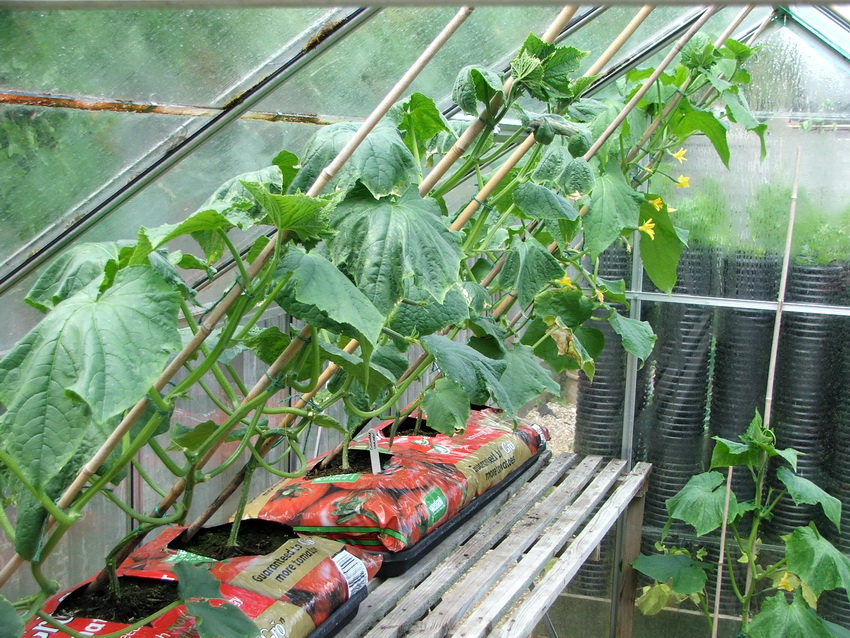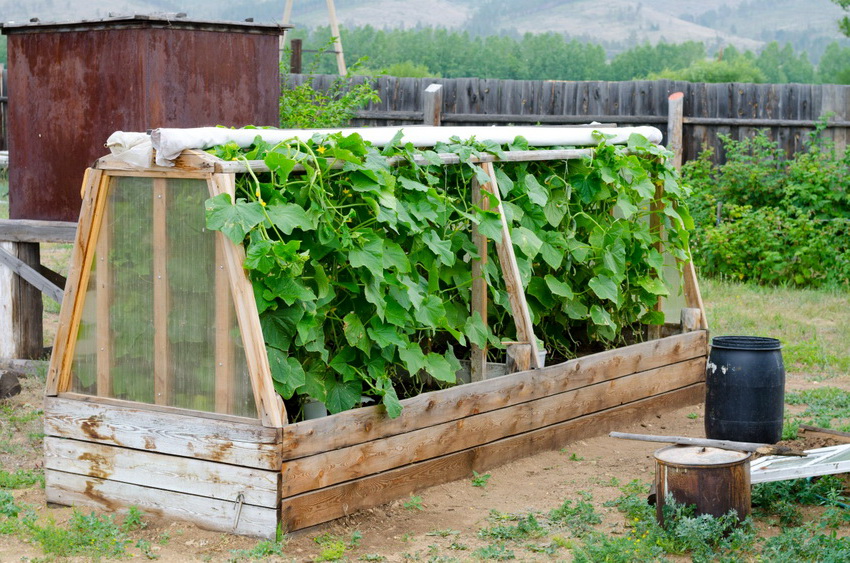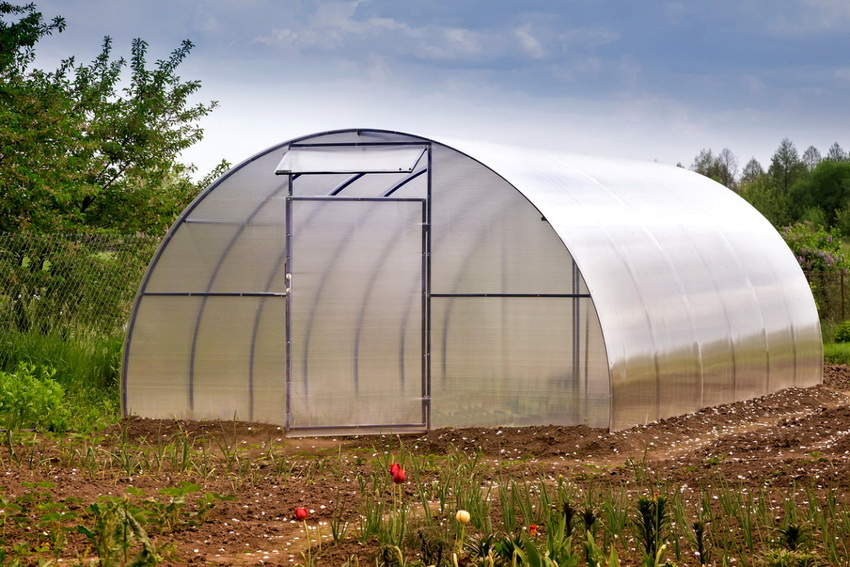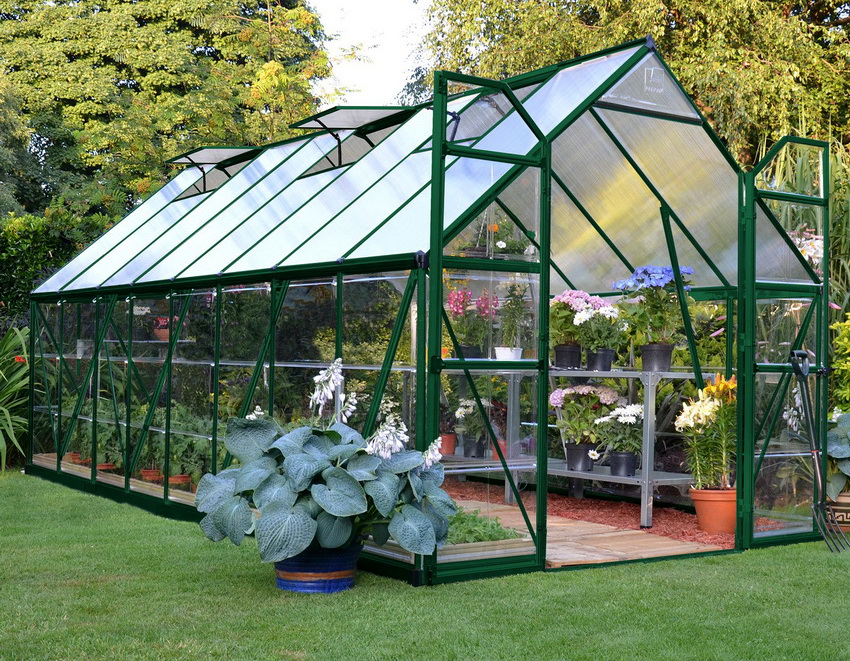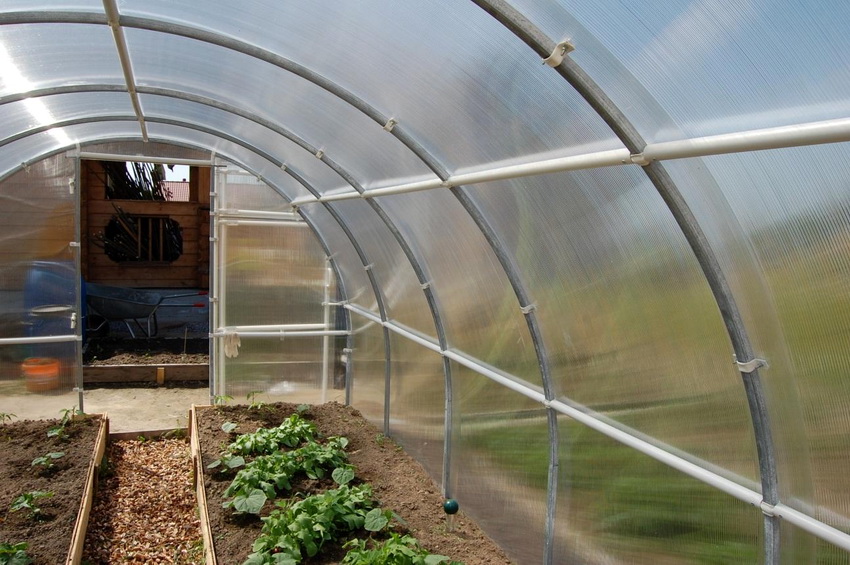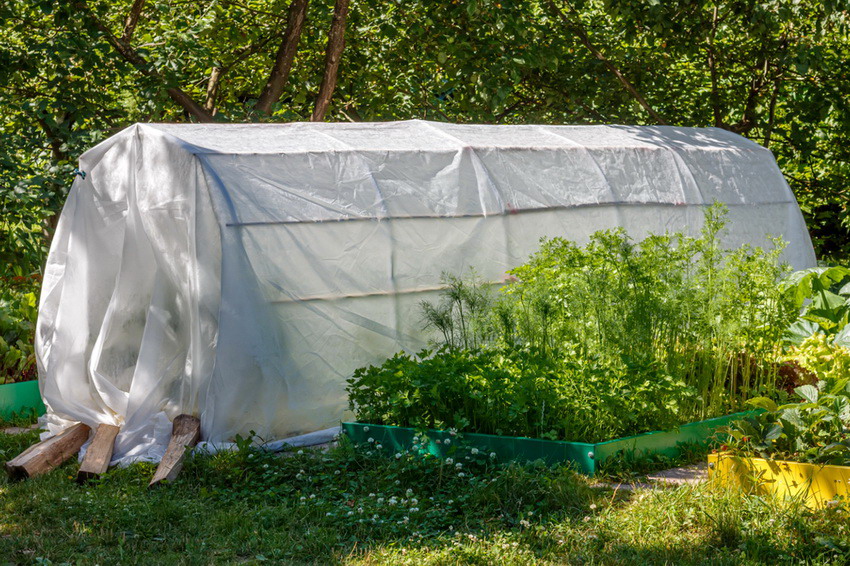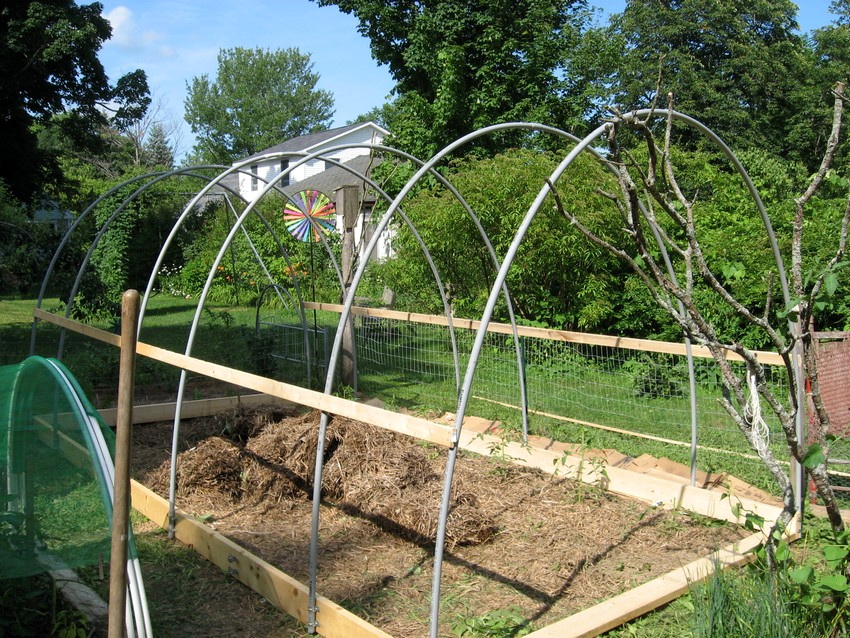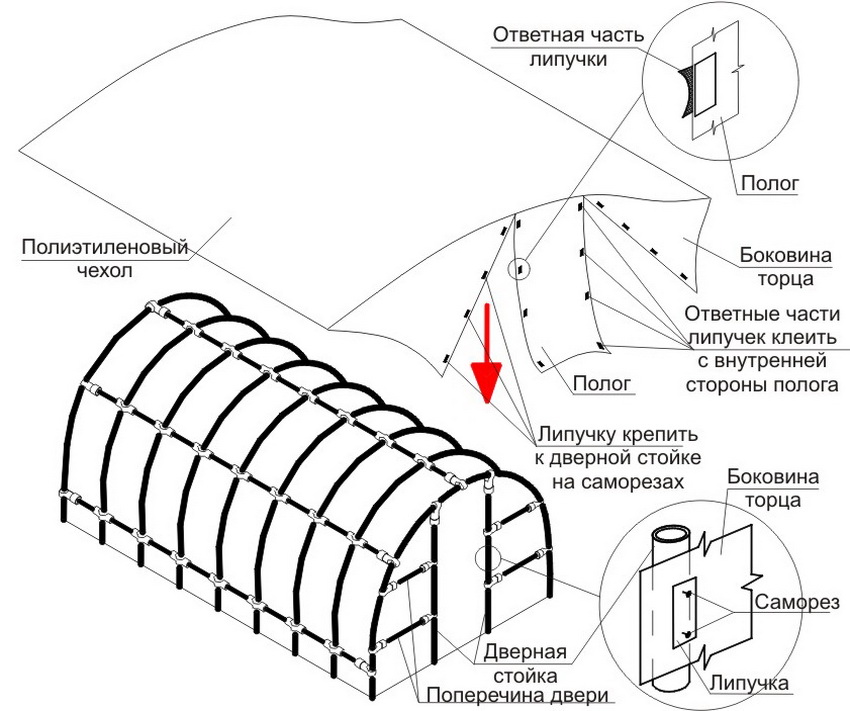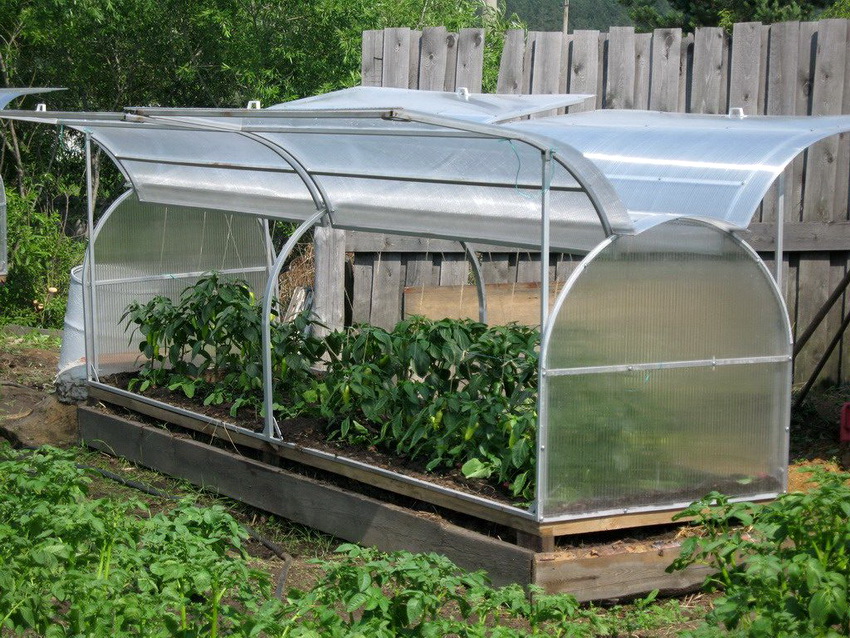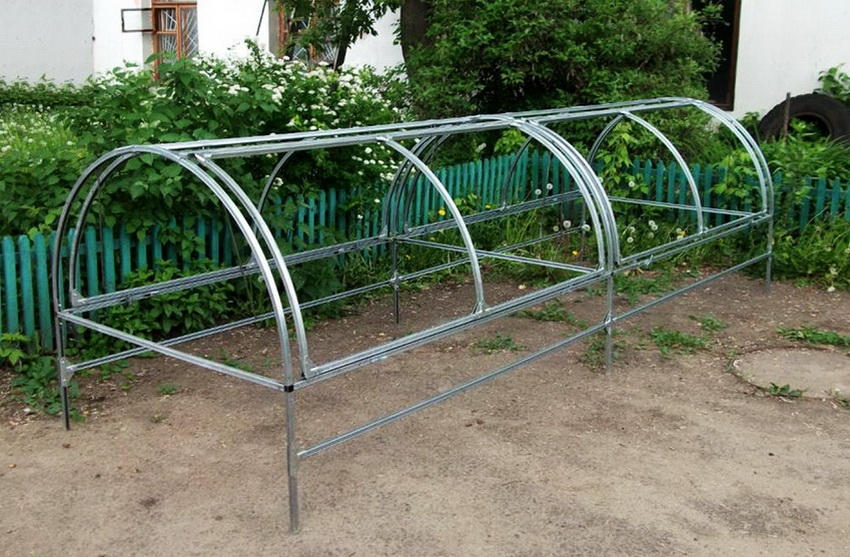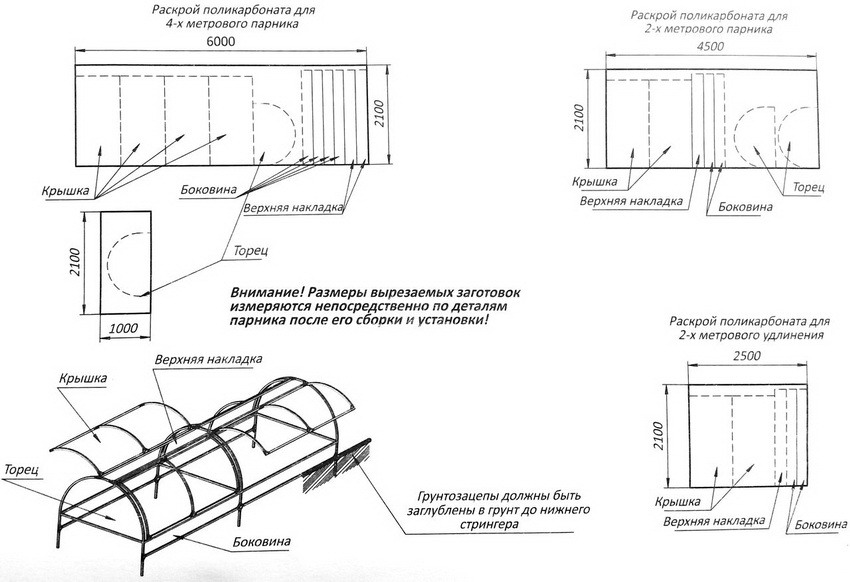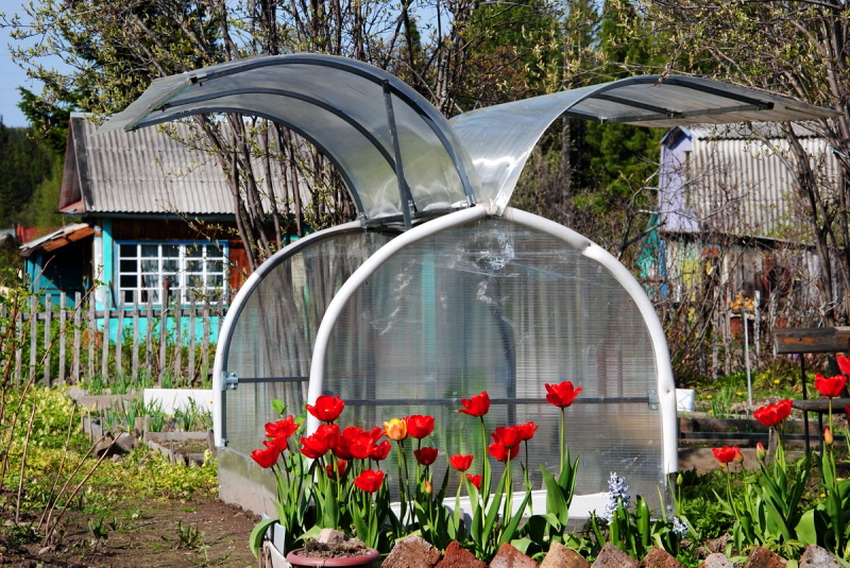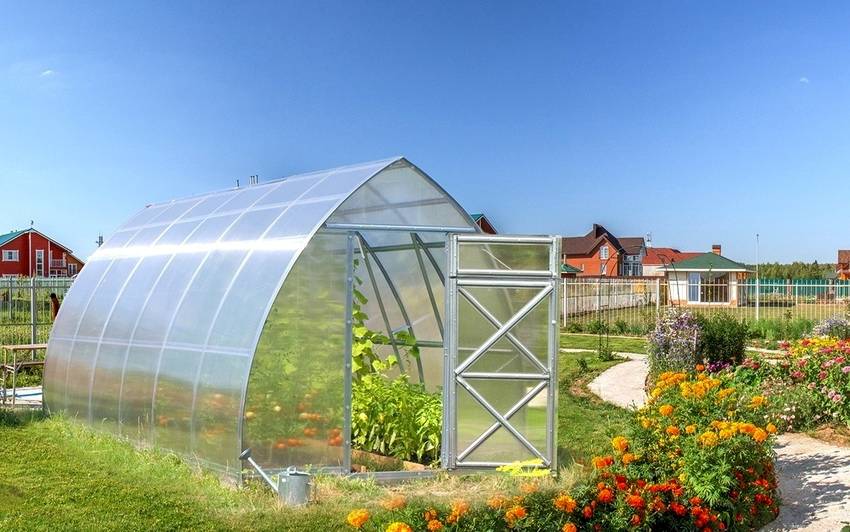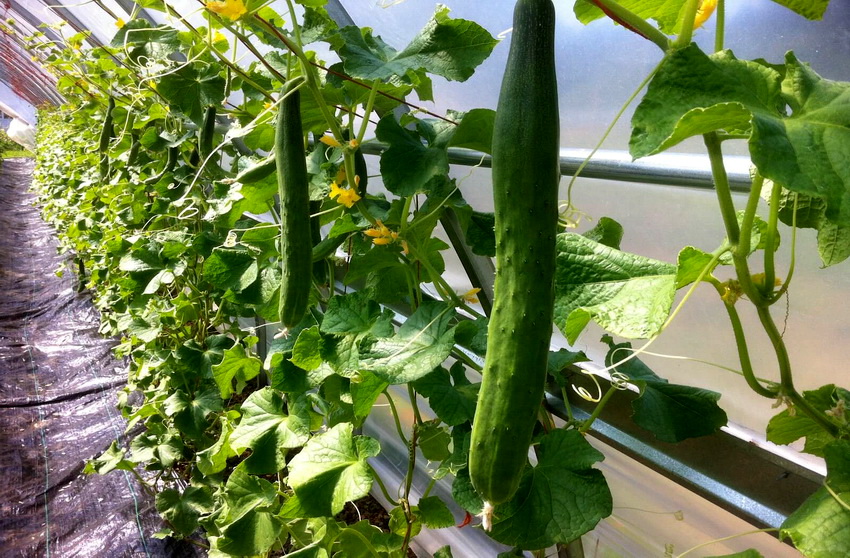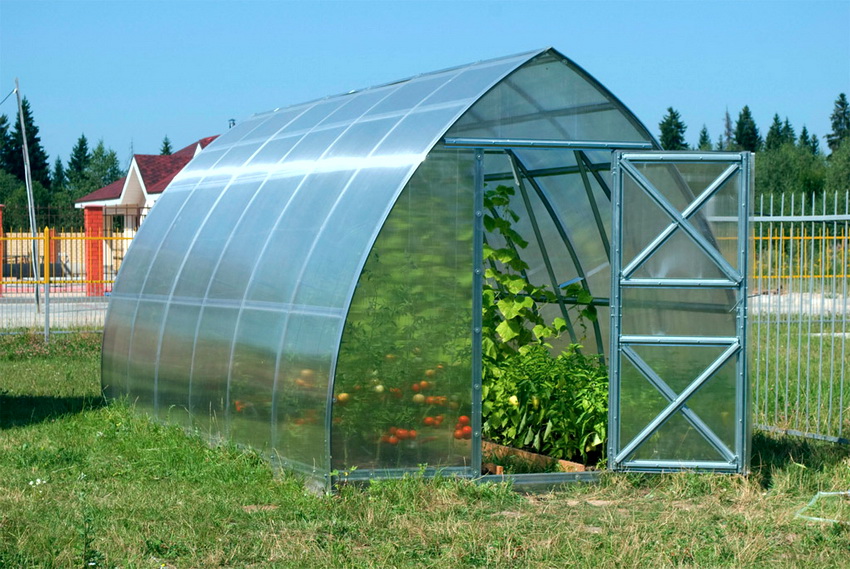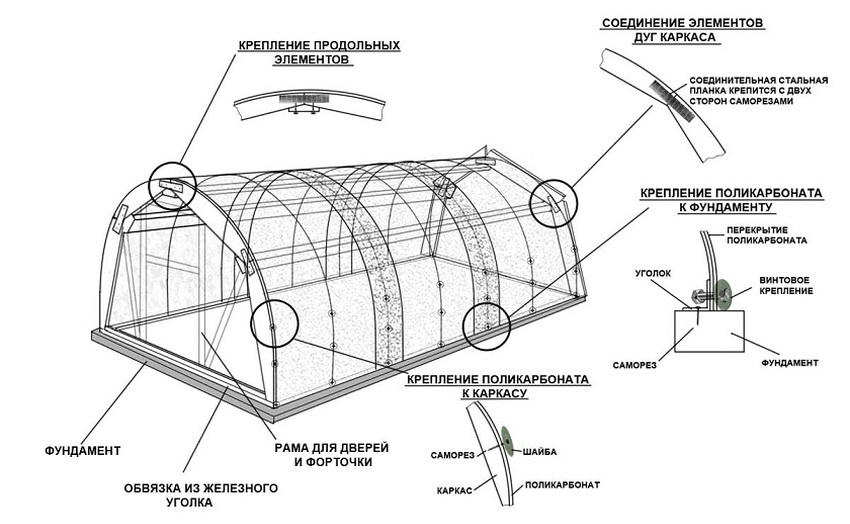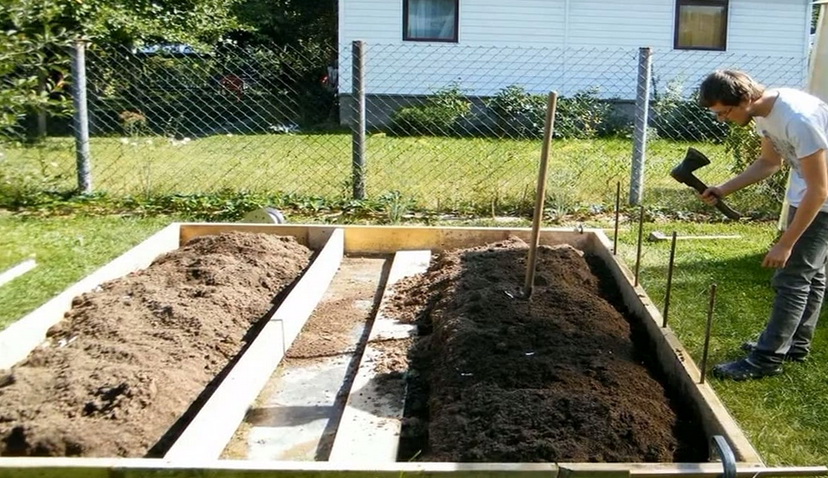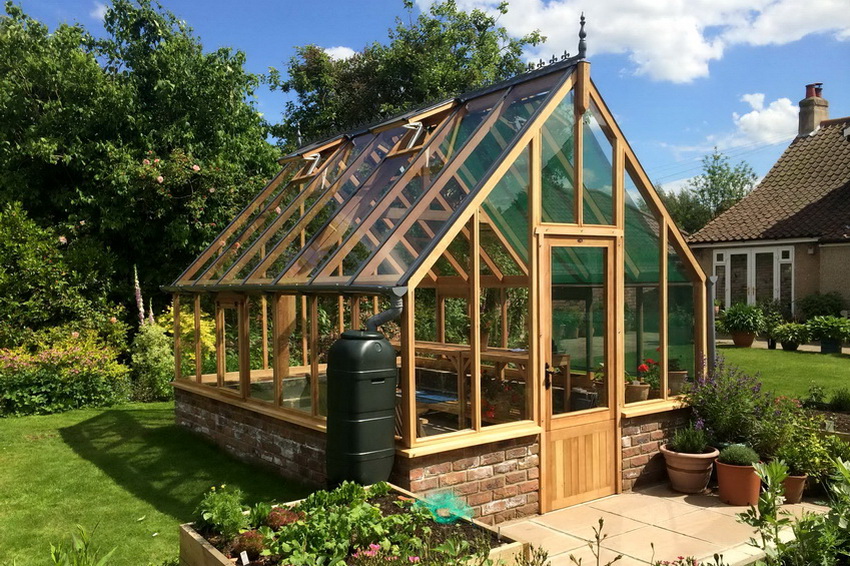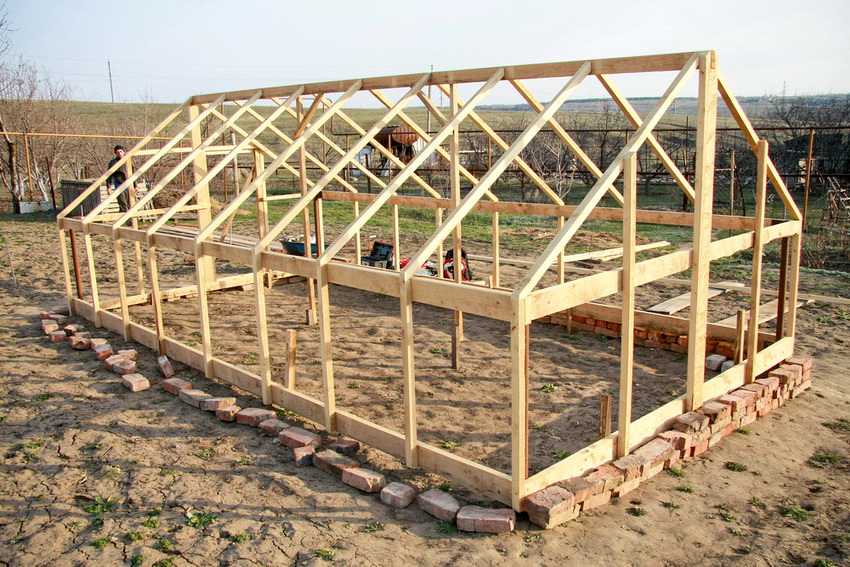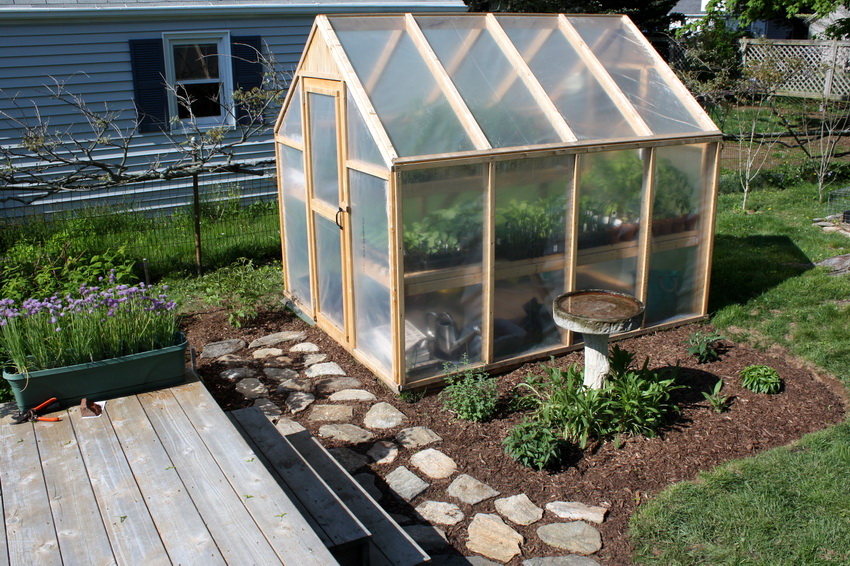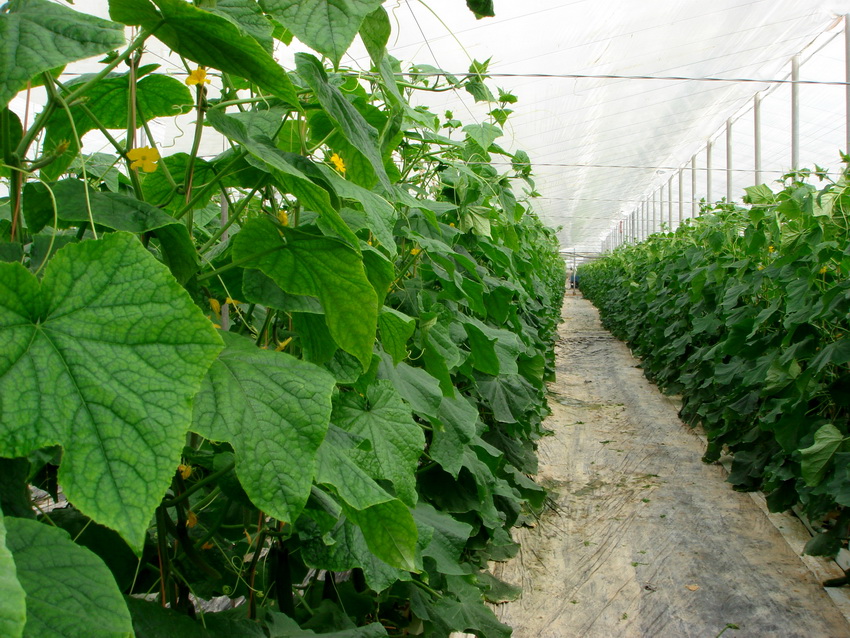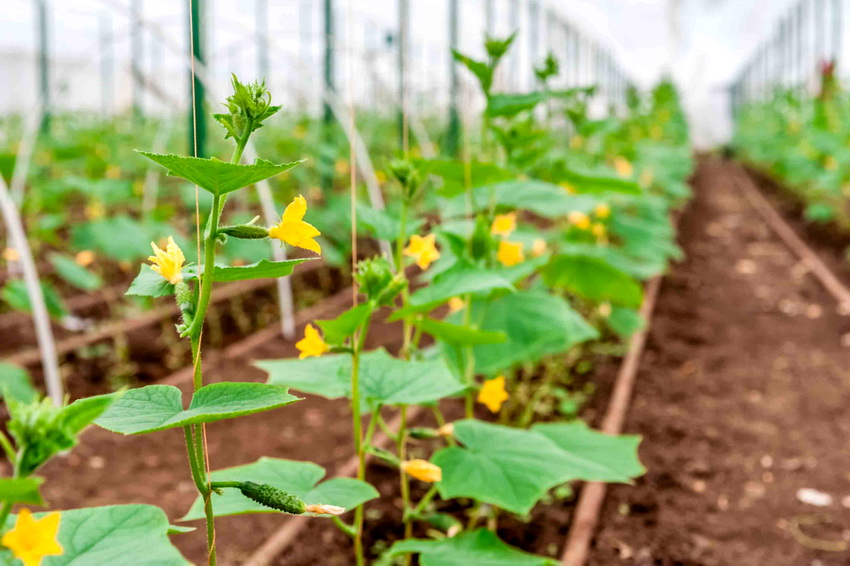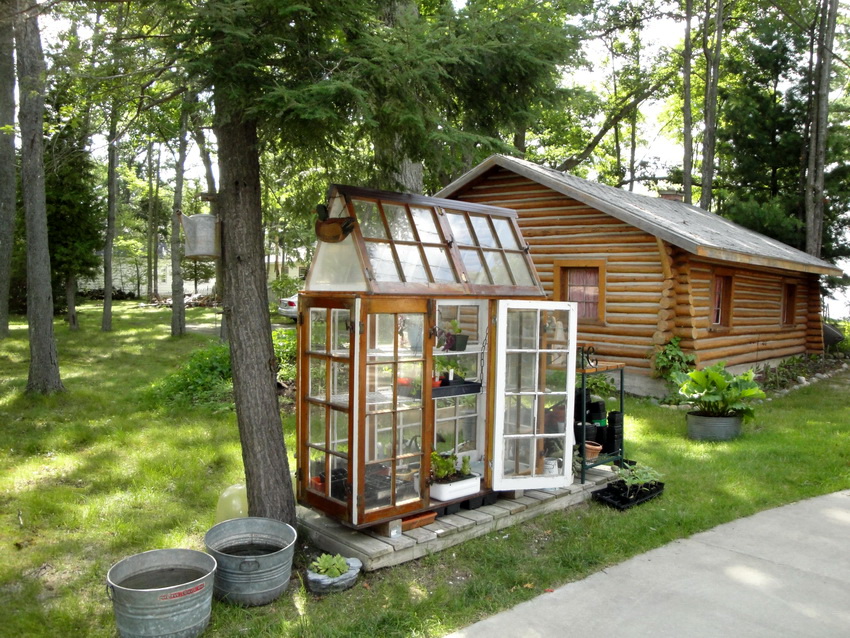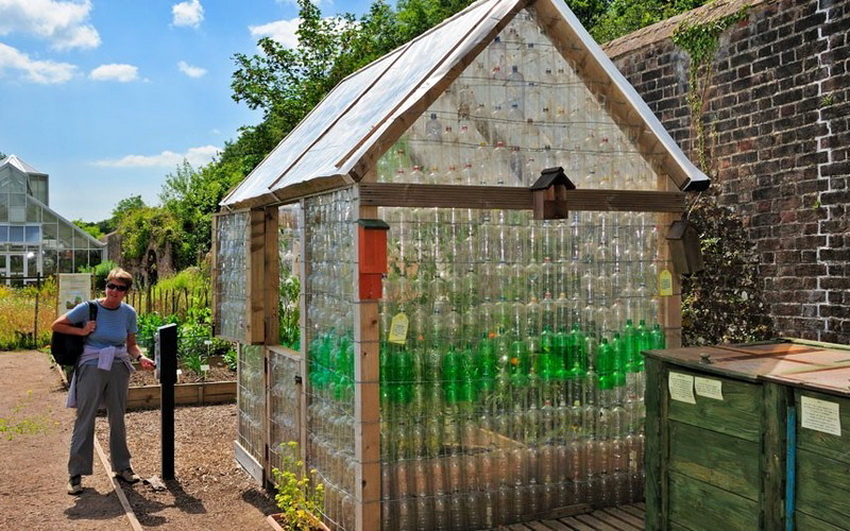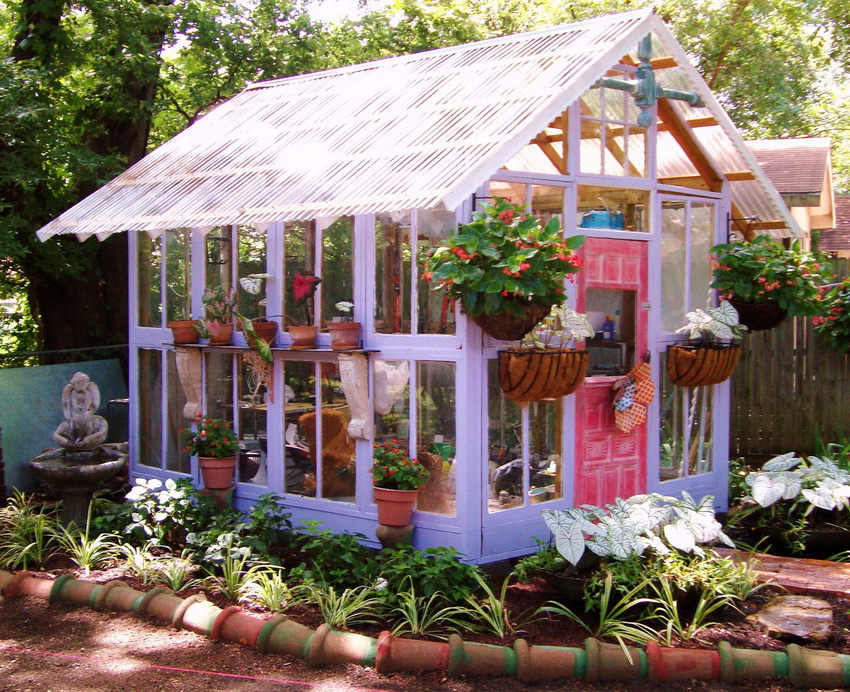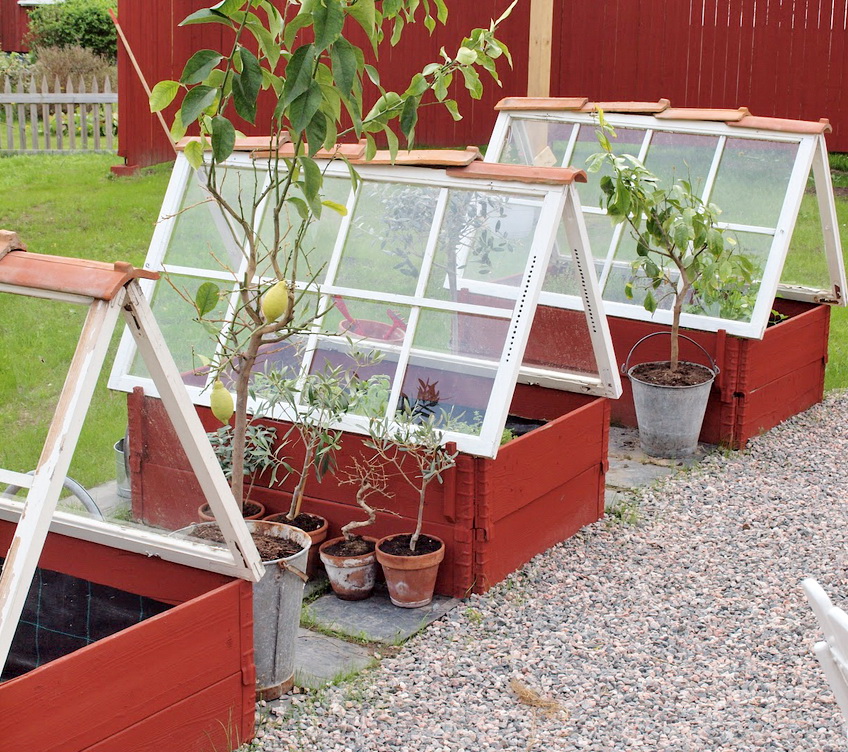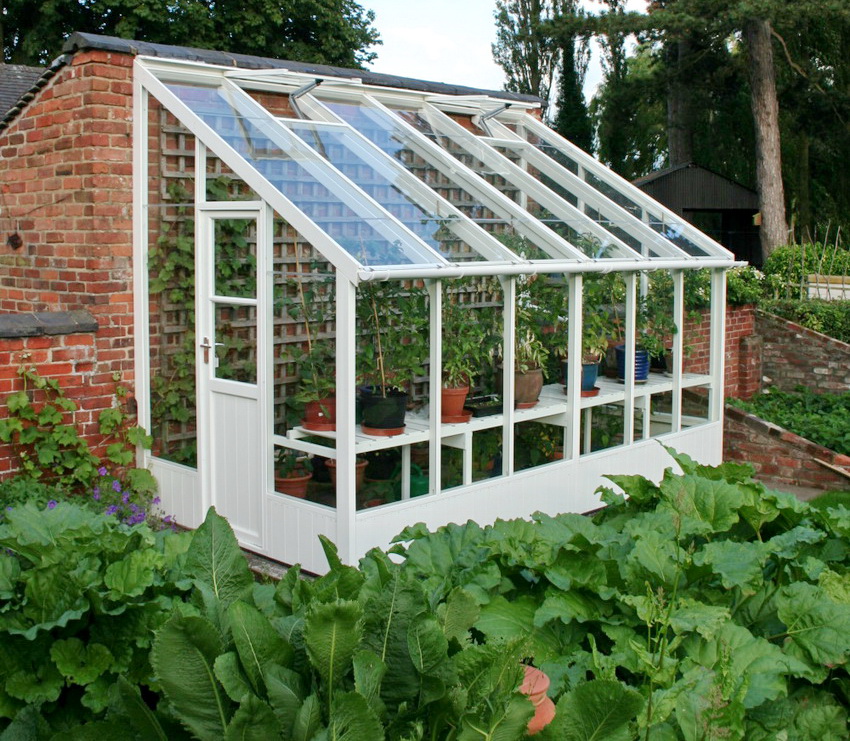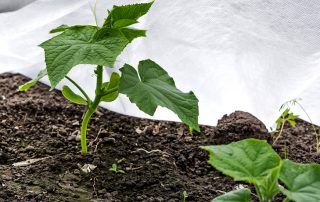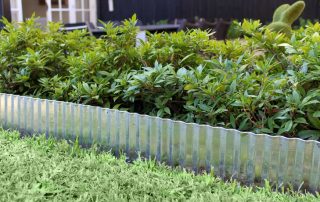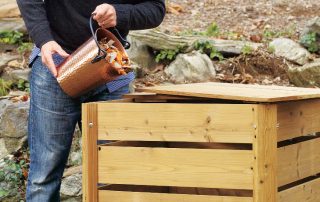Greenhouse cultivation of cucumbers in our region is quite common, because thanks to this method, you can enjoy your own vegetables in early spring. But how can you create a suitable microclimate for them? Consider how to make a greenhouse for cucumbers with your own hands: photo examples, diagrams, as well as some options for ready-made designs that can be purchased.
Content [Hide]
- 1 Which is better: make a greenhouse for cucumbers with your own hands or buy a ready-made
- 2 How to make a greenhouse from arcs: choosing the most suitable material
- 3 Do-it-yourself greenhouse for cucumbers: photos of various options and models
- 3.1 How to make a greenhouse for cucumbers using film
- 3.2 How to make a greenhouse for cucumbers with your own hands: Butterfly design
- 3.3 DIY polycarbonate greenhouse for cucumbers: material features
- 3.4 Greenhouse for cucumbers made of polycarbonate: step-by-step instructions for construction
- 3.5 How to make a greenhouse from a covering material in the form of a hut with your own hands
- 4 How to properly organize the space inside the greenhouse for cucumbers: photo
- 5 Unusual greenhouses for do-it-yourself cucumbers from scrap materials
- 6 How to make a greenhouse for cucumbers with your own hands: video instruction
Which is better: make a greenhouse for cucumbers with your own hands or buy a ready-made
Today, you can easily purchase a ready-made greenhouse for cucumbers, which will be enough to install on the site and start using it. Nevertheless, many owners prefer homemade structures. Let's consider what advantages this or that option has, and which is actually better.
Among the advantages of ready-made greenhouses, one can note the fact that the structure is completely ready for use, which saves you from all the hassle associated with its construction: calculations, procurement of materials and assembly. However, this solution also has a number of disadvantages associated with some restrictions on the size and shape of the greenhouse.
If you want to buy a greenhouse for cucumbers, you will have to face such a phenomenon as standard sizes, which are far from always suitable for a particular site. Moreover, there is no way to influence their shape either. The disadvantages also include their considerable cost.

For growing cucumbers, you can buy or build a convenient DIY greenhouse
If you are engaged in manufacturing yourself, then you can install an ideal design of the size and shape that you need.Such a greenhouse can be dismantled and reassembled at any time if the need arises.
We must not forget about the difficulties that will have to be faced in the process of work. In order for the structure to be durable and reliable, it is necessary to accurately make calculations and follow them during the construction process. Despite the fact that the cost of a homemade greenhouse will be less than that of ready-made structures, taking into account the time and effort spent, the costs can be almost the same.
Useful advice! Before purchasing all the materials necessary for work, it is necessary to carry out the most accurate calculations. Otherwise, you run the risk of overspending and a shortage or oversupply of materials.
How to make a greenhouse from arcs: choosing the most suitable material
The strength and reliability of your greenhouse will depend on the quality of the selected arcs, so you should pay attention to this issue. Before giving preference to one or another option, it is recommended to consider the advantages and disadvantages of each. There are four materials that are suitable for this purpose: steel, reinforced plastic, plastic and aluminum.
It is worth paying attention to the difference in the price of these materials, since their cost differs significantly. The most expensive ones are aluminum arcs, and besides, they are quite difficult to work with. It is necessary to select products of sufficient strength and thickness, as well as the same size. The advantages of using aluminum pipes include:
- high strength and long operating period;
- light weight;
- material resistance to corrosive processes;
- ease of facing covering material.

Dimensions of structures greenhouses from arcs can be both large and very small
However, these costs and efforts are well worth it. The result is a durable, lightweight structure that can be easily installed both on a pre-prepared foundation and simply into the ground.
It will be much easier to work if you give preference to metal arcs for a greenhouse in PVC winding. While maintaining such characteristics as low weight and high strength, the purchase will cost you significantly less. In addition, having read the instructions on how to assemble a greenhouse from arcs and film, you can easily and quickly assemble the structure yourself.
Useful advice! Having decided to purchase metal-plastic pipes for a greenhouse, it is best to give preference to products of a larger diameter, since they have increased strength and resistance to corrosion.
The simplest, cheapest and therefore the most popular option is plastic arches for a greenhouse. It is easy to work with them, and the low price and long service life surpass all other materials. The only thing worth considering is that it is better to buy plastic arches for a greenhouse of a larger diameter and density. This will save time and effort, and the strength of the finished structure will be higher.
Do-it-yourself greenhouse for cucumbers: photos of various options and models
Homemade cucumber greenhouses can differ from each other in a huge number of characteristics, from what materials were used to build it, to size or shape. Of course, you can develop your own scheme, which will be most suitable for the proposed conditions, however, this requires a lot of effort, and no one ruled out the risks of serious mistakes.
Consider several of the most popular options for greenhouses for do-it-yourself cucumbers, their advantages, construction and operation features.
How to make a greenhouse for cucumbers using film
The easiest way to make a greenhouse yourself is to use film and metal arcs for this purpose. Although such a structure will not be distinguished by excessive strength, it is very convenient, since it can be easily repaired and, if necessary, dismantled. With the help of materials at hand, polyethylene, which covered the arcs, is fixed, which allows the greenhouse to remain intact.
In order to equip the space for growing cucumbers, and understand how to cover a greenhouse made of arches with a film, you must adhere to the following algorithm of actions:
- choose a suitable location that gets enough sunlight. It is desirable that the area for the greenhouse be located at some elevation in order to avoid the accumulation and stagnation of water in case of rain;
- mark the area, orienting the greenhouse from east to west. The maximum size of a greenhouse for cucumbers of this design is 2 m wide and 3-4 m long;
Related article:
Do-it-yourself greenhouse from a profile pipe: photos of finished structures
Do-it-yourself greenhouse from a profile pipe: photo and description of the stages of work. How to choose a place and covering material for a structure.
- using wooden boards, make a small frame (about 20 cm) around the future garden;
- observing a step of about 50-60 cm, make holes along the entire length of the board, which will serve to fix the arcs;
Useful advice! Any flexible metal elements, including wire, can be used as arcs.
- using metal wire, connect the arcs together at the top points. This will give the frame additional rigidity;
- the film with which you plan to cover the greenhouse must be at least 120-200 microns in thickness, otherwise it will tear too often;
- on one of the long sides of the greenhouse, the film must be rigidly fixed, and on the other, it is enough to press it down with something heavy (bricks, stones, boards);
- the short edges of the film can either be fixed using the same materials at hand, or pulled and secured with pegs, as is done when setting up a tent.
Like the installation, the process of operating such a simple greenhouse for cucumbers with your own hands does not present any difficulties for the owners. All you have to do is turn off one of the edges of the film to ventilate, water, and care for the plants.
How to make a greenhouse for cucumbers with your own hands: Butterfly design
The butterfly greenhouse is famous among summer residents, thanks to its simple and convenient design, which allows you to rationally use all the available space, and at the same time have access to all the beds. Such structures are stronger and more durable than the previous version, and the level of protection that they provide to cucumbers is much higher.
"Butterfly" is able to withstand a rather serious bad weather. This applies to heavy showers, hail and even snow, the level of which does not exceed 10 cm. But even in hot weather, this greenhouse is very convenient, as it is well ventilated.
Outwardly, this design resembles house with a gable roof, each part of which can be opened. This system allows the owner to access any part of the greenhouse or simply ventilate. It is quite common to find butterfly greenhouses on sale, but you can also build them yourself.
If you buy a ready-made greenhouse of this design, then it will be made of metal and polycarbonate (sometimes glass). But for independent work, a wooden frame and polyethylene or glass are more suitable.
Note! One of the most difficult parts of a butterfly greenhouse is the locking mechanism. Therefore, it is necessary to carefully consider and plan all stages of work.
Let's take a step-by-step look at how to properly make a greenhouse for Butterfly cucumbers:
- carefully clear the area set aside for construction from grass and foreign objects;
- to create a frame, use high-quality boards (best suited from coniferous trees);
- You can install a greenhouse directly on the ground, but it will be better to prepare a base from a bar for it in order to avoid further rotting of the base. To do this, remove the topsoil and make a drainage layer of about 10-15 cm using fine gravel;
- insert glass into the prepared frames (it is permissible to use ordinary window glass) and fix them securely;
- fasten all structural elements.
In order to protect the wood and avoid decay processes, be sure to treat all wooden elements with a special compound. This will significantly extend the life of your greenhouse.
DIY polycarbonate greenhouse for cucumbers: material features
Not so long ago, a new type of greenhouse appeared, for the manufacture of which they use a material such as polycarbonate. This synthetic material has found widespread use in agriculture, and is often used for a wide variety of purposes, including creating greenhouses.
The advantages of this material include low weight, as well as resistance to mechanical stress. The transparency of polycarbonate is about 80-85%, which allows plants to receive the required amount of sunlight. At the same time, it is resistant to precipitation and cools slowly, keeping the heat inside the greenhouse longer.
It is not difficult to buy a polycarbonate greenhouse for cucumbers, however, since working with this material is quite simple, many people prefer to do everything with their own hands. In order for the result not to disappoint, you must adhere to some recommendations for working with this material:
- the thickness of the sheets used for the construction of the greenhouse must be at least 4 mm and not more than 6 mm;
- since plants require not only sunlight, but also fresh air, carefully consider the ventilation system and how the watering will be carried out;
- a sharp knife is perfect for fitting polycarbonate to the desired size, but it is important not to damage its surface during operation, since it is very easy to leave scratches;
- in order to avoid unnecessary waste of material, carefully calculate everything in advance and try to act in accordance with these calculations.
The care of a polycarbonate greenhouse also requires special attention. It is highly discouraged to use cleaning agents to clean it. This will negatively affect his appearance: he will become clouded and lose his attractiveness. To remove dirt, it is enough to wipe it with a damp cloth.
Greenhouse for cucumbers made of polycarbonate: step-by-step instructions for construction
In order to make a greenhouse for cucumbers, you will need the following materials:
- wooden bars or metal profiles for the greenhouse frame;
- polycarbonate sheets;
- film or roofing material;
- self-tapping screws and screwdriver.
How many materials you need must be calculated individually, since it directly depends on the size of the structure.
Note! A protective coating is required not only for the wooden elements of the greenhouse, but also for the metal ones. Processing of metal parts is required to avoid corrosion.
Preparation for the installation of such a greenhouse must begin with laying the foundation. To do this, you need to dig a trench with a depth of 0.5 m and a width of 2 m. The length of the trench will depend on how large the greenhouse you plan to install. A layer of a mixture consisting of sand and gravel is poured into the pit, and on top it is covered with a 30-centimeter layer of soil. After that, you can proceed to laying the waterproofing layer, for which you will need a film or roofing material.
We adjust the wooden base to the size of the prepared foundation, which we install and securely fix. After that, we make racks with a pitched top from boards or beams. Observing a step of 1 m, we attach the frame to the base of the frame, after which we attach polycarbonate sheets to them. Since this is a rather fragile material that can easily crack, it is recommended to put metal washers under the screws.
How to make a greenhouse from a covering material in the form of a hut with your own hands
A greenhouse hut is ideal for growing crops such as cucumbers, as they can grow up to 1.5 meters in height. Conventional arcs are not suitable for such a design, since it will not turn out to be stable, but the materials at hand and covering material well suited for this purpose. Of course, you can weld a frame from heavy metal pipes, but it will cost a lot.
It is worth starting with the assembly of the box, which will serve as the base of the greenhouse. After that, you can proceed to attaching the upper part. It is best to use a wooden beam for this, the length of which is 1.7 m, and the section is 50x50 mm. On one side, it is attached to the base, in the same way as it is done with arcs.
It is important that after fixing, the timber is inclined towards the garden bed. The two ends of the elements located opposite each other are also fastened, which gives them the shape of a hut.
To give the structure more strength, transverse crossbars are installed between the vertical supports of the hut, which, moreover, will serve as the basis for fixing the film. At the very top, in the places where the bars converge, a solid board is attached.
The finished frame can only be covered with a film. In order for gusts of wind not to break it, you can nail polyethylene to the transverse boards using thin strips for this.
Useful advice! To make it easy for the plants to trail, you can pull a regular garden net inside such a hut.
How to properly organize the space inside the greenhouse for cucumbers: photo
Regardless of whether you made a mini-greenhouse for cucumbers with your own hands or built a full-fledged greenhouse, it is very important to rationally use the space available inside. As a rule, the dimensions of the arches for the greenhouse or other elements that make up the frame are selected taking into account the fact that in the future you will need to take care of the plants.
Here are some guidelines to help you organize the space inside the greenhouse for cucumbers:
- for small-sized structures, the ideal scheme for planting cucumbers in a greenhouse will be to divide the space into two equal parts, where the beds will be located on the sides, and a path will pass in the middle;
- so that the beds have clearly defined boundaries, think over a fence for them. It may be small, but should clearly delineate landing sites and walkways;
- be sure to treat all materials that are used to decorate the space inside the greenhouse with a special protective agent. This will prevent rotting due to high humidity;
- attention is also required to the soil, which is in the greenhouse, and in which you will plant cucumbers. Its humidity should not be excessively high, especially during the cold season;
- high humidity in the greenhouse is a prerequisite for good plant growth, therefore all materials that you plan to use for the design of paths and fences must be resistant to moisture and temperature.
By precisely adhering to the recommendations on how to make a greenhouse for cucumbers yourself, you can avoid many problems associated with eliminating shortcomings in the future. Thus, saving time and effort to eliminate errors.
Unusual greenhouses for do-it-yourself cucumbers from scrap materials
In order to make a mini-greenhouse for cucumbers, you can use a wide variety of materials at hand. Including those that in everyday life we are accustomed to throw away thoughtlessly. Let's consider some simple options.
Do-it-yourself greenhouse for cucumbers from plastic bottles
Empty plastic bottles are considered rubbish, however, they can be useful in the household. Including when it is necessary to equip a place for planting cucumbers. Of course, other materials, such as a timber frame, will be required to provide the structure for rigidity. However, such a structure will be made of those materials that are likely to be found in any country house.
Useful advice! For a homemade greenhouse, it is better to make a gable roof from scrap materials, since the wooden base will not bend, and water can accumulate on the flat roof.
Having built a primitive wooden frame, it must be sheathed. For this, you will need plastic bottles. They can be of the same or different colors, but it is important that enough sunlight penetrates into the greenhouse, so it is better to refuse too dark ones.
The bottom and neck of each bottle must be cut off. After that, the remaining part is cut along the length and straightened in such a way that an even plastic rectangle is obtained. Then you have to sew the resulting elements together, using a wire for this. Having collected a fragment of the required size, it is easy to attach it to the frame using a construction stapler.
Considering that the wire connections will not be airtight, an additional layer of polyethylene must be used for the roof. So with minimal investment, you can make a greenhouse for cucumbers from boards and plastic bottles with your own hands.
Using window frames for a wooden greenhouse for do-it-yourself cucumbers
Another option to save money and make a greenhouse yourself from scrap materials is to use old window frames for this purpose. If there are enough of them, you can make a completely transparent design with an opening top. If there are not enough frames, you can build a structure near the building, using its wall as one of the sides. It is important to ensure that the top frame is sloped, otherwise rainwater will constantly accumulate on the roof.
Even if you only have one window frame available, you can still arrange a small greenhouse. For this purpose, a box of an old refrigerator, which can often be found in summer cottages, is perfect.
Having familiarized yourself with the features of choosing a place, as well as general recommendations on how to make a greenhouse for cucumbers yourself, you can proceed to assembly. First of all, treat all wooden parts of the frames with a special protective impregnation and paint. It is important that the inclination level of the finished box is at least 30º.
For this, the rear wall must be installed higher than the front one.
If you approach the construction of a structure with due attention, then it is quite possible to organically fit into the overall design of the site a do-it-yourself greenhouse for cucumbers. Photos of examples of such greenhouses can be found on the Internet on thematic forums and blogs.
Self-production of a greenhouse for cucumbers from a vine
In order to grow cucumbers, it is not necessary to purchase ready-made arches for a greenhouse. 4 meters of flexible material can also be found among the materials at hand. In order to make a solid vine structure, you will need an old garden hose and vine, which can be found near almost any body of water. The main thing is to select rods of sufficient length and at least 10 mm thick.
The harvested vine must be cleaned of twigs and bark. After that, the existing garden hose must be cut into pieces, each of which will be about 20 cm. Rods are inserted from each of its sides. It is important that the vine fits as tightly as possible. The result should be one full arc, consisting of a piece of hose and two twigs of a vine.
Using the principle of constructing an ordinary arched greenhouse, the required number of arcs is installed on the prepared frame and covered with polyethylene, tightly pulling it, and fixing it where necessary.
